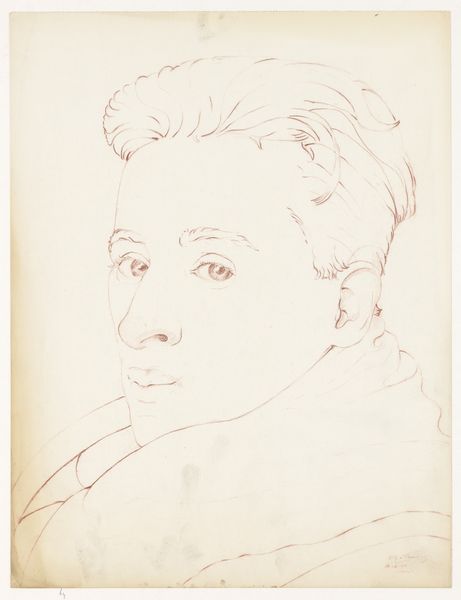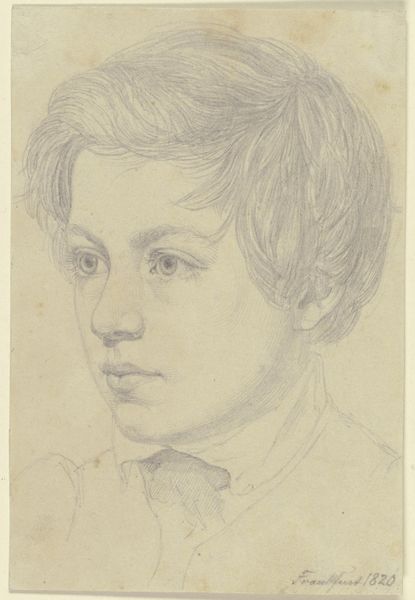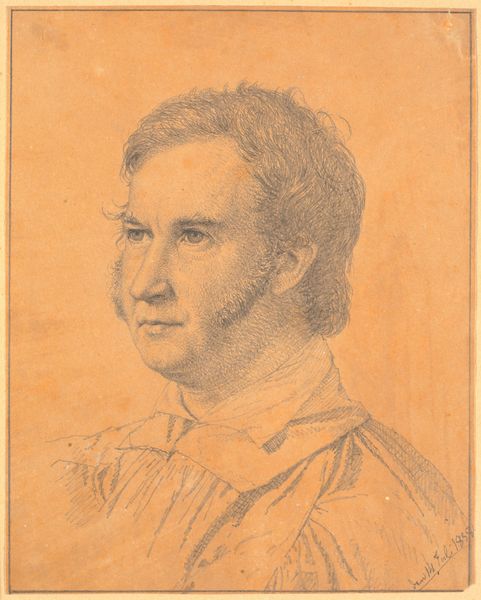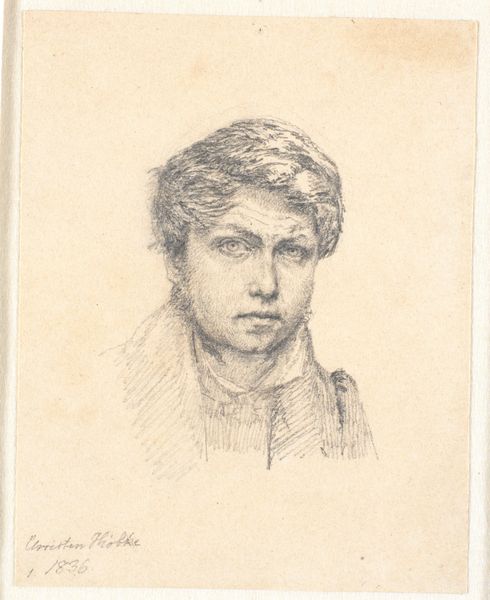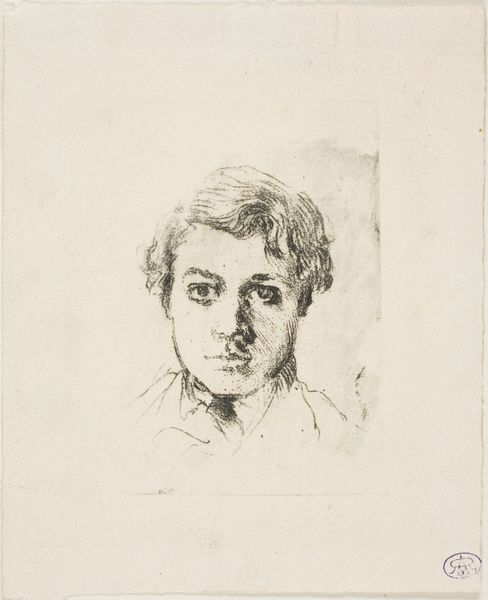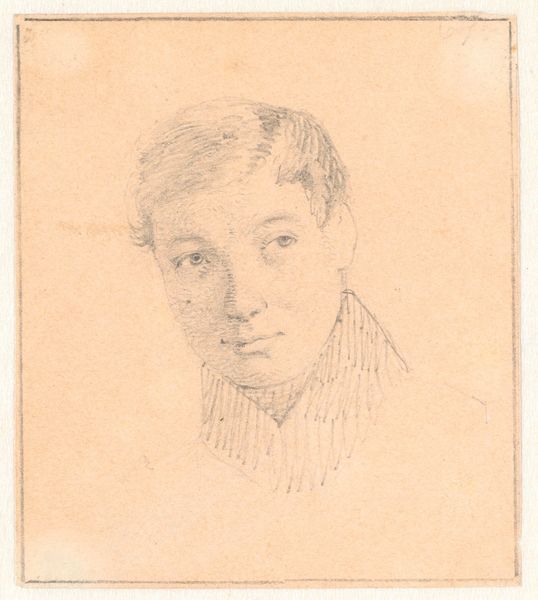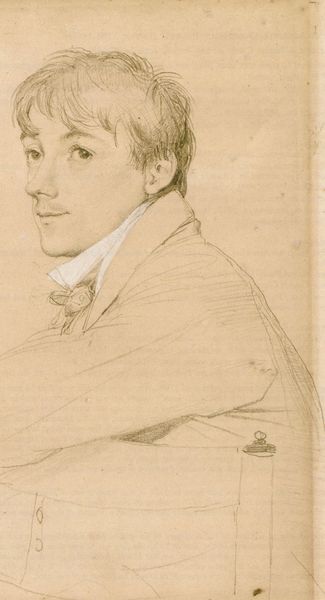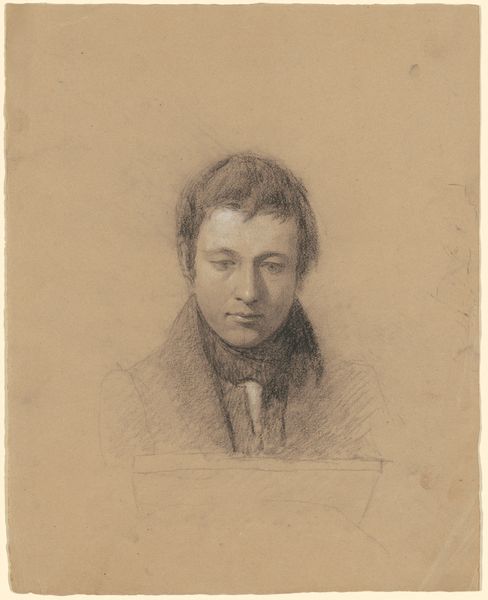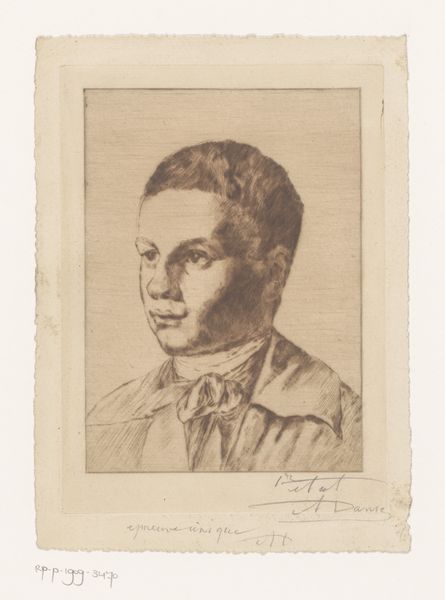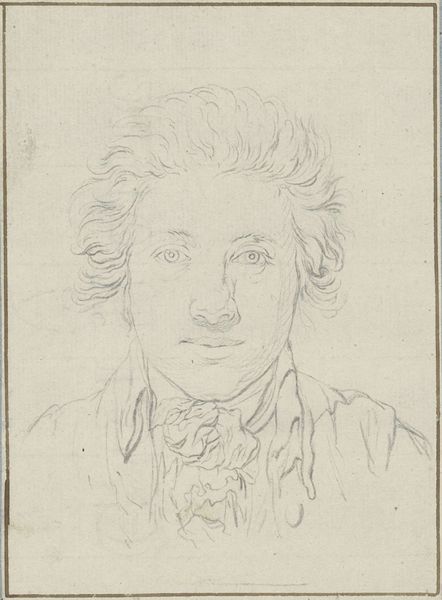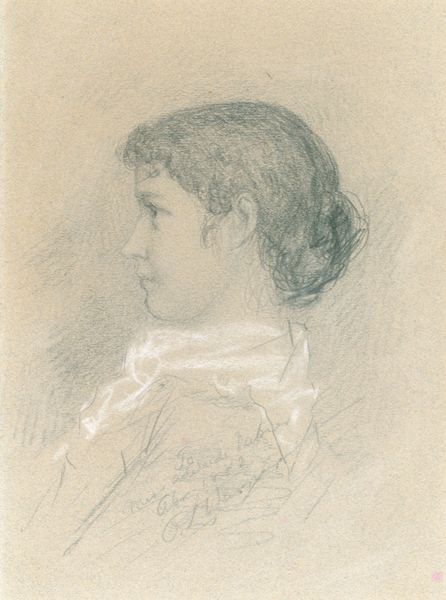
drawing, graphite
#
portrait
#
drawing
#
romanticism
#
graphite
#
realism
Dimensions: 146 mm (height) x 118 mm (width) (bladmaal)
Curator: Let’s turn our attention to this compelling portrait by Christen Købke, executed in graphite in 1837. It’s a study of fellow Danish Golden Age painter Jørgen Roed. Editor: Immediately, I'm struck by the intensity in Roed's gaze. It possesses a certain youthful optimism but is tinged with introspection. He seems a man on the cusp of something significant. Curator: Absolutely. Think of the sociopolitical climate of Denmark at the time. The Romantic era fostered an intense focus on individual expression and national identity. Artists like Købke were exploring what it meant to be Danish through their work. How does Roed, himself a portraitist known for his genre paintings, fit into this? This portrait situates Roed within this conversation, reflecting on artistic and national aspirations of that time. Editor: Indeed. His clothing, though casually depicted, speaks to the burgeoning middle class and its visual markers of respectability, challenging the traditional hierarchies depicted in older forms of portraiture. But his gaze is more powerful than the status imbued by his garments. The artist here seems most preoccupied by character. I cannot help but also notice that even this quickly-done study shares resemblance with Northern renaissance portraiture. His face, lit plainly, directs the viewers eyes directly to his gaze. Curator: And considering Roed's own artistic trajectory – how he moved toward more overtly nationalistic and religious subjects – we can see this portrait as capturing a moment before he fully embraced those themes. There's a vulnerability here, an openness, before the weight of expectation fully settles in. His works after all have a distinct air of national identity with some being heavily politically involved. This portrait however suggests the subject's ability to remain true to the universal ideals, the ability of transcendence over cultural or geographical contexts, despite Købke's probable artistic or even political intentions when rendering this piece. Editor: The use of graphite is interesting too. It gives the portrait a soft, almost dreamlike quality, appropriate considering the movement. But the details within the shading still root him in our physical world. A sort of push-and-pull dynamic, as with most pieces of Romanticism! It feels like he is here, and is elsewhere, which lends even more nuance to the eyes with all its intensity. The gaze becomes multifaceted with just one element in this otherwise simple composition. Curator: A valuable connection, thank you. In the end, this portrait goes beyond merely capturing Roed's likeness. It stands as a document of the artistic landscape during a transformative period for Danish identity. Editor: Indeed. Köbke here has given us a snapshot of a moment, that contains entire worlds. I keep coming back to those searching eyes!
Comments
No comments
Be the first to comment and join the conversation on the ultimate creative platform.
